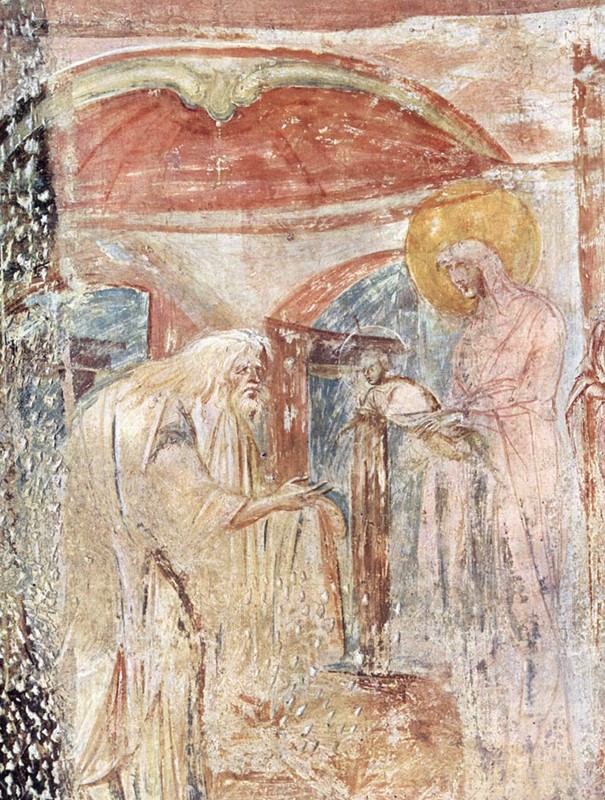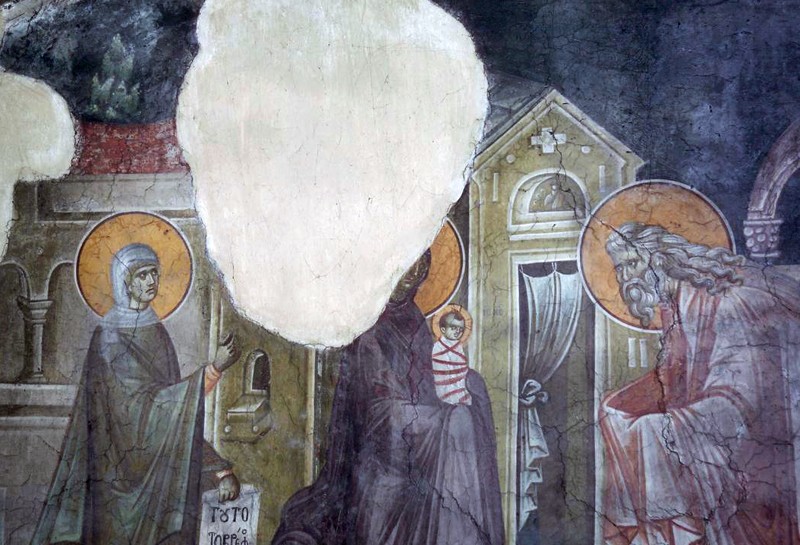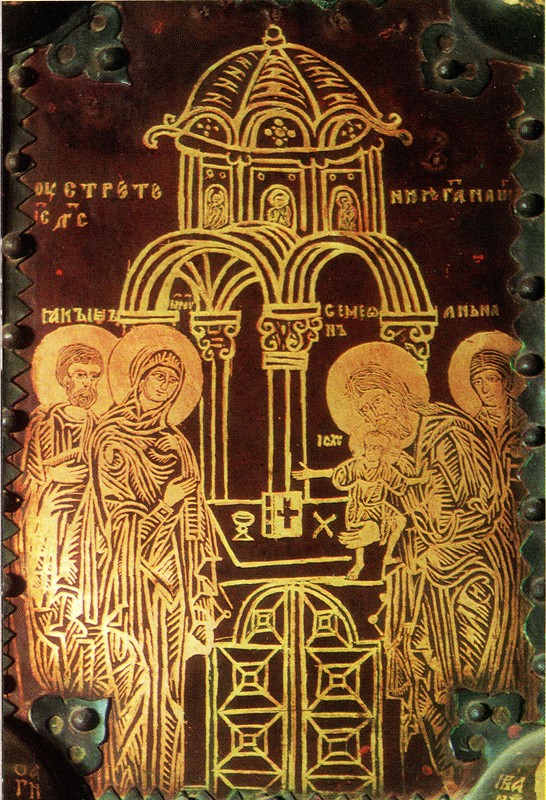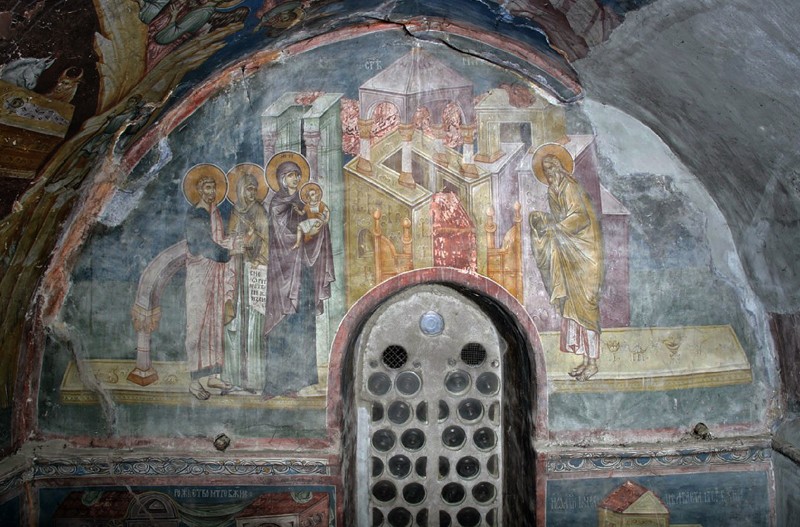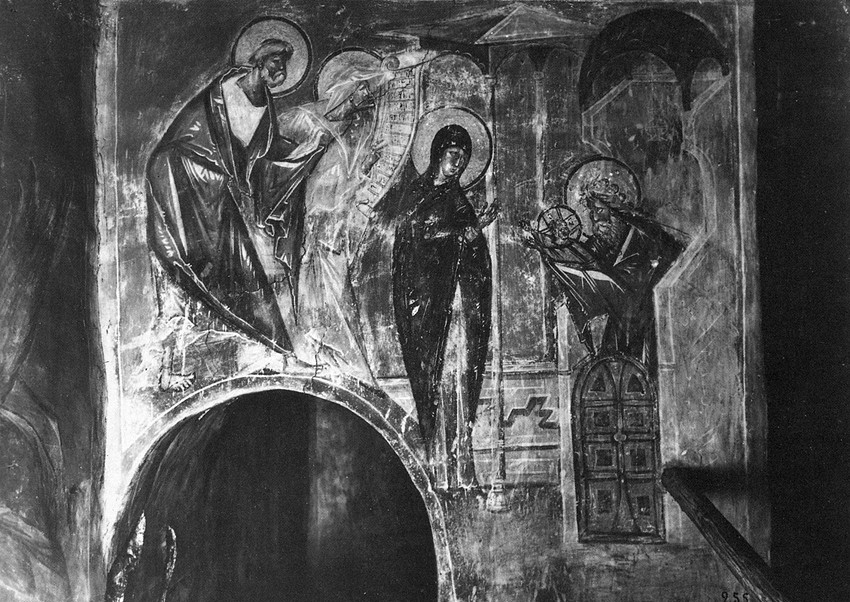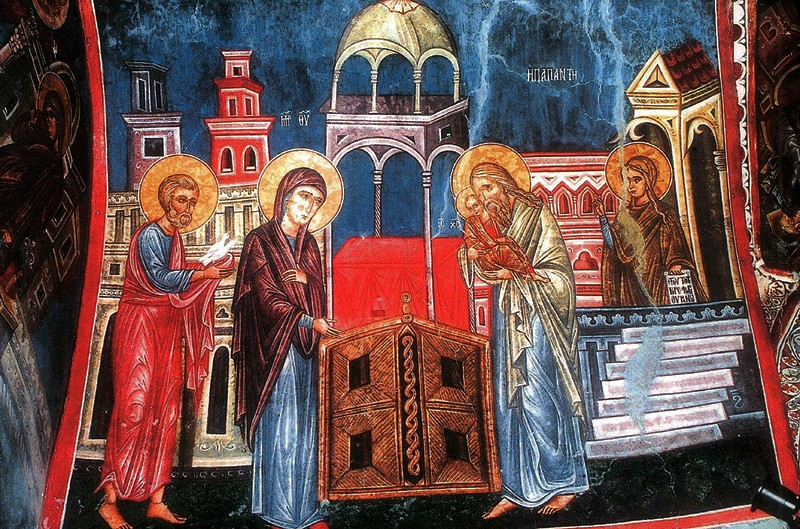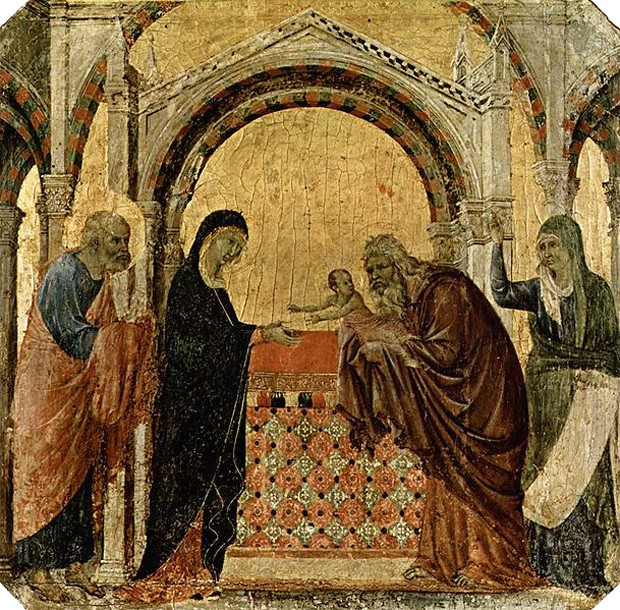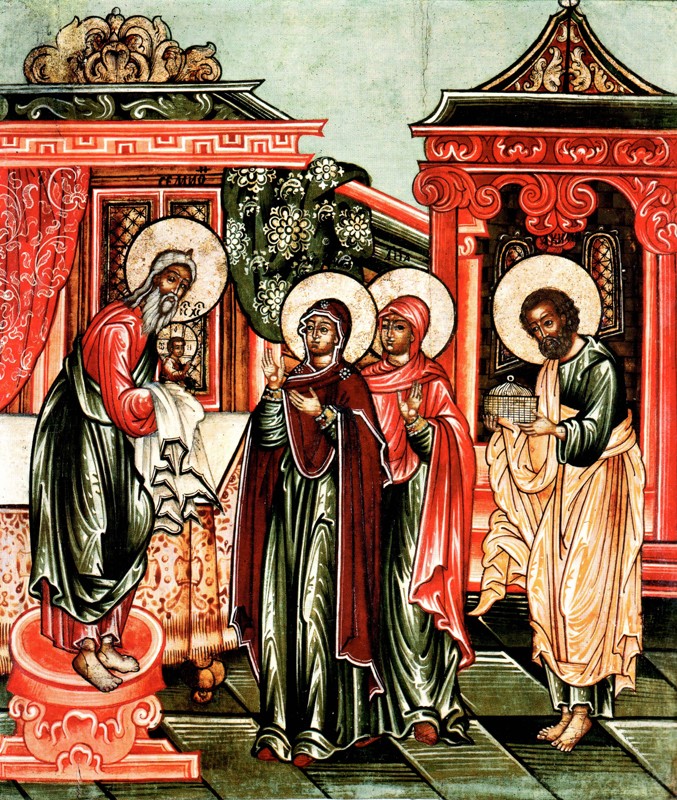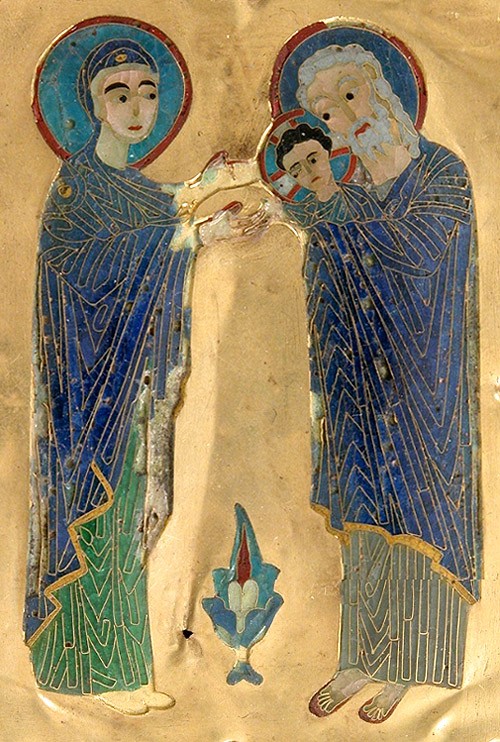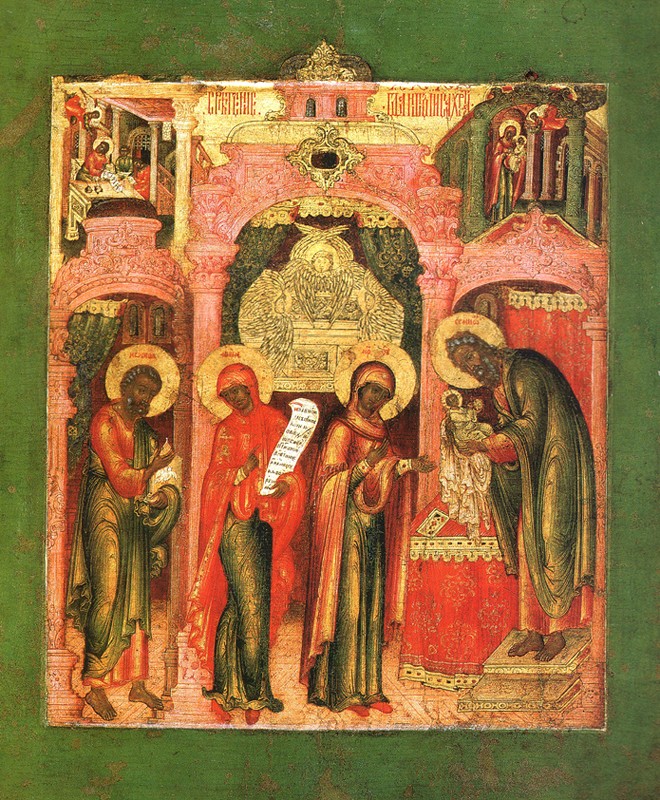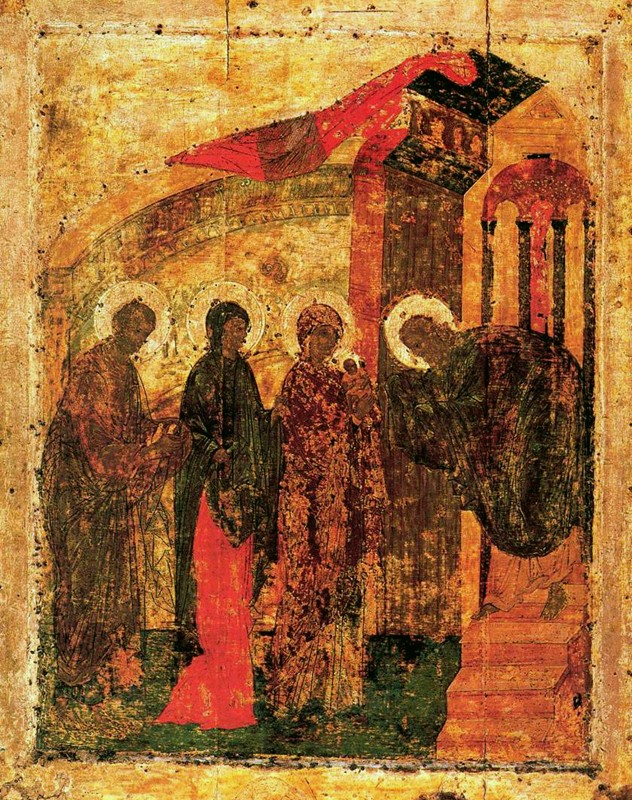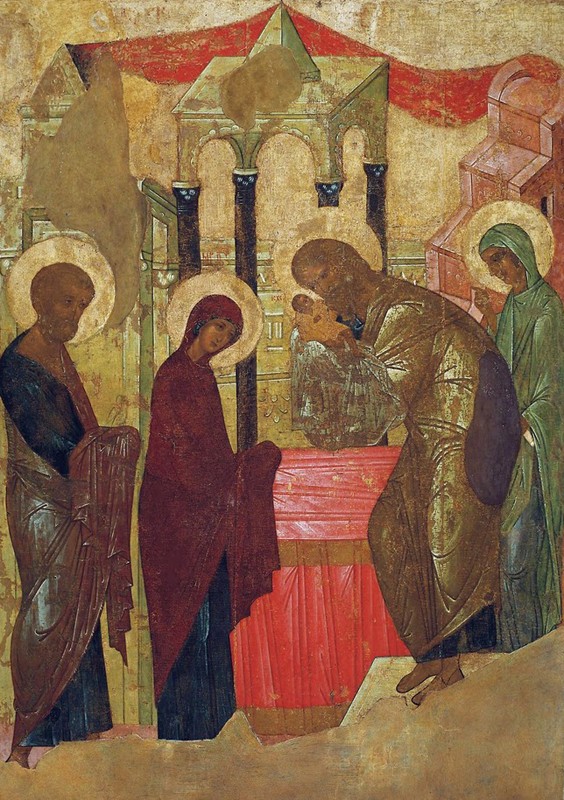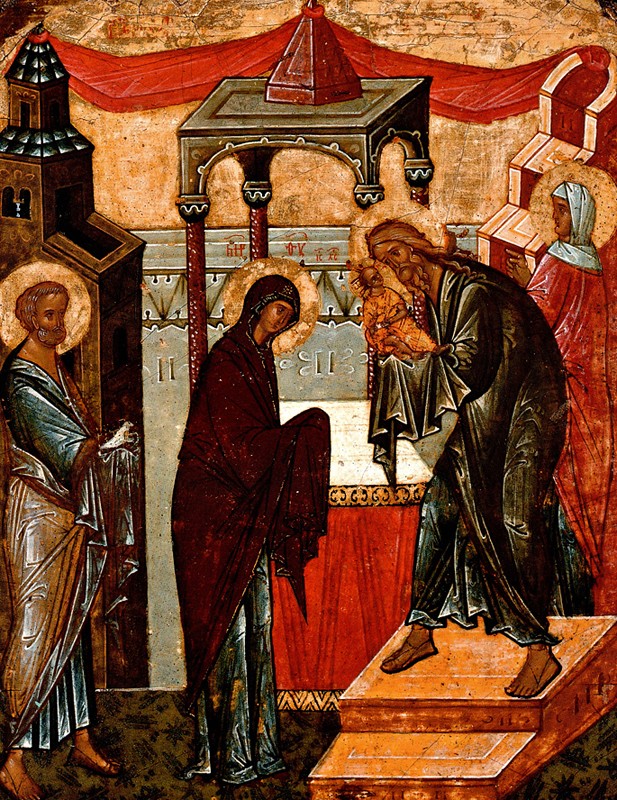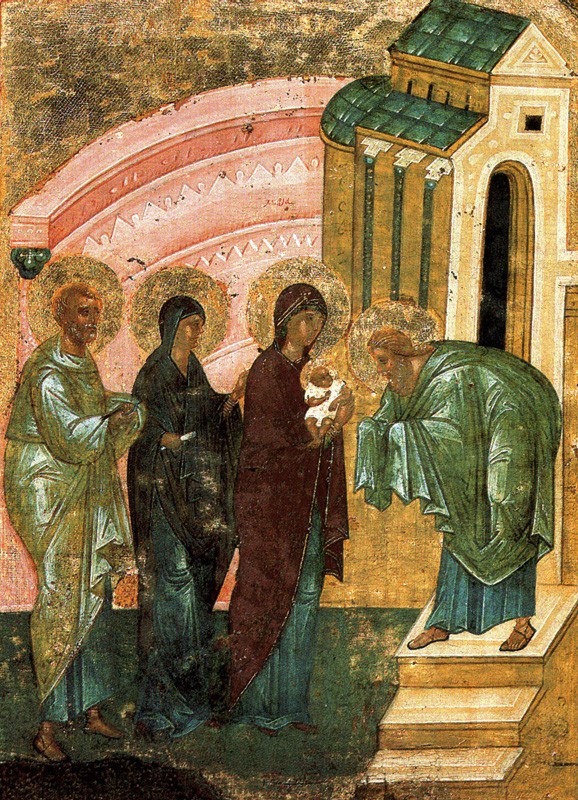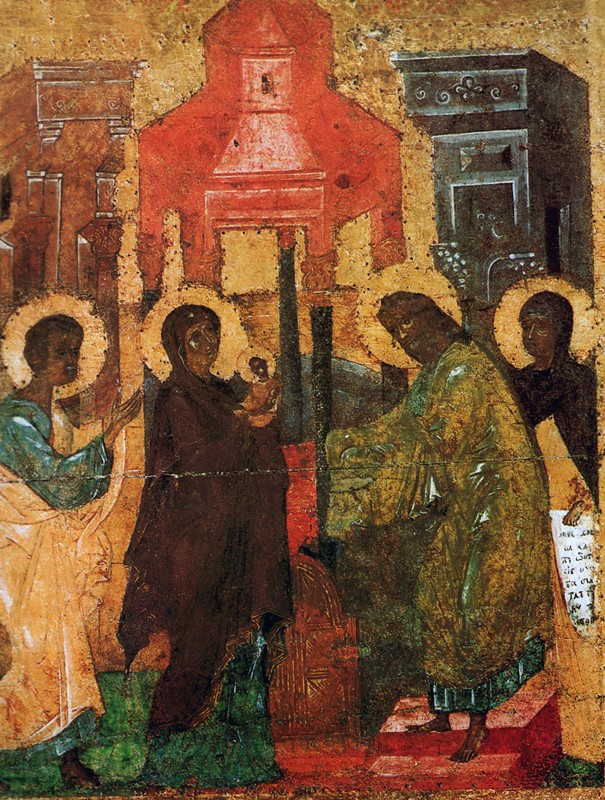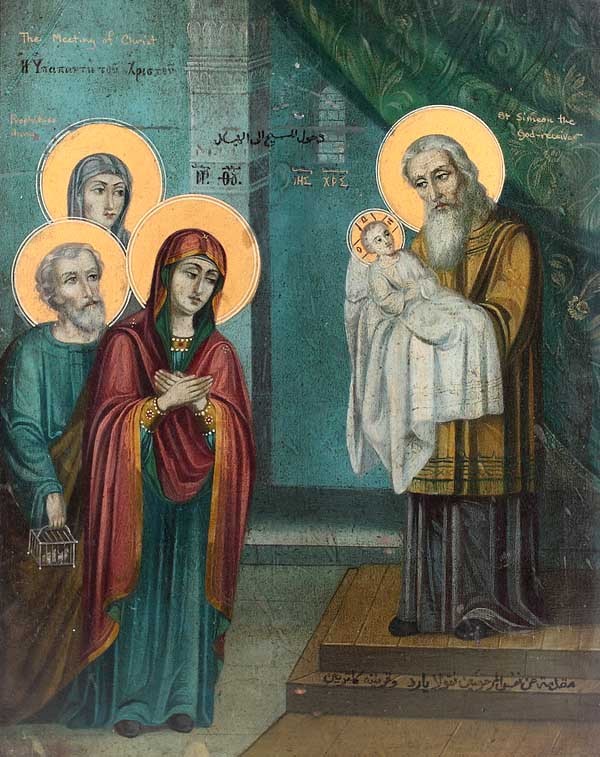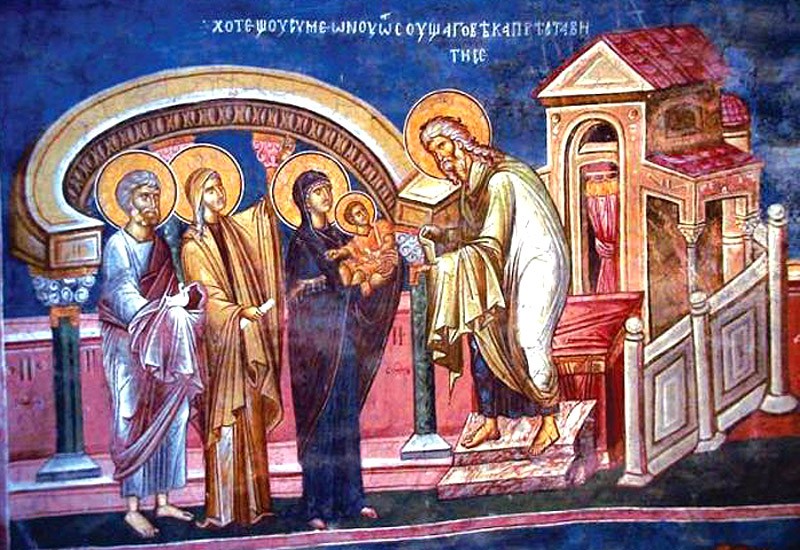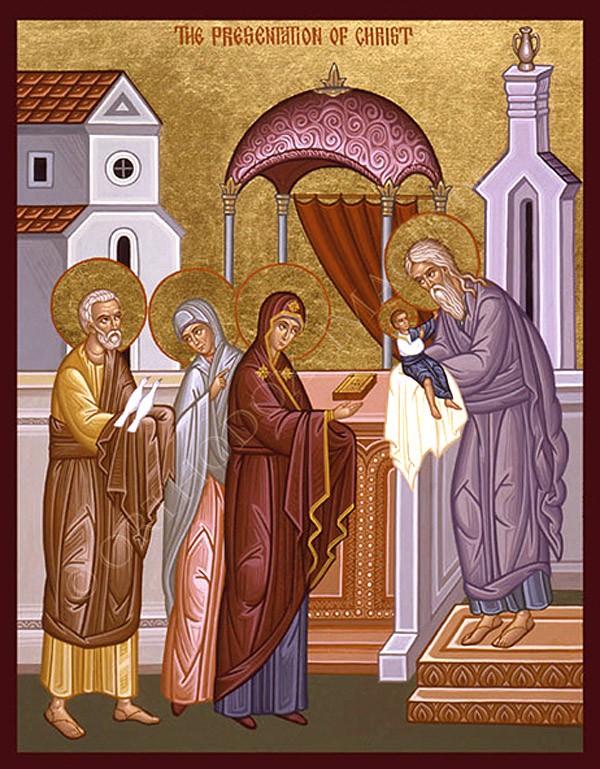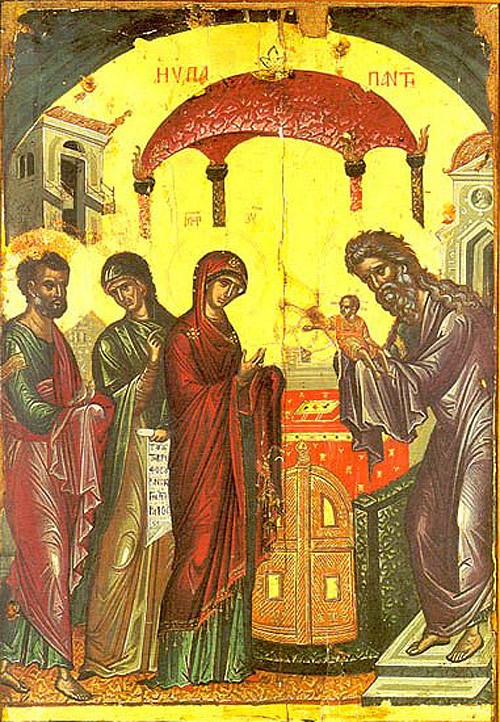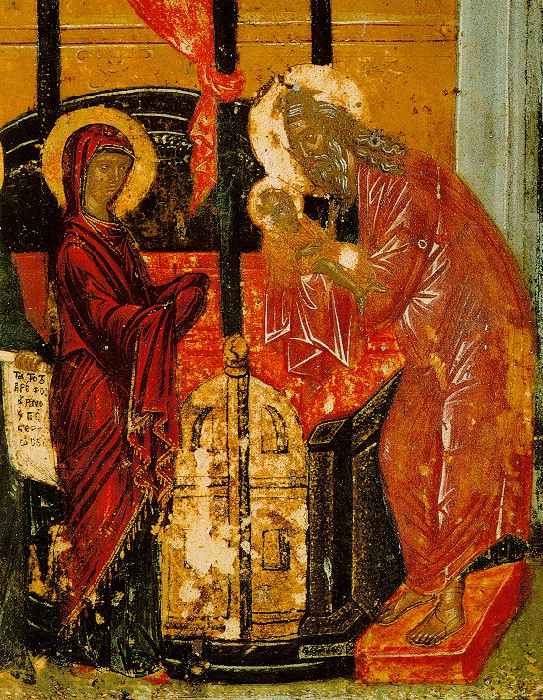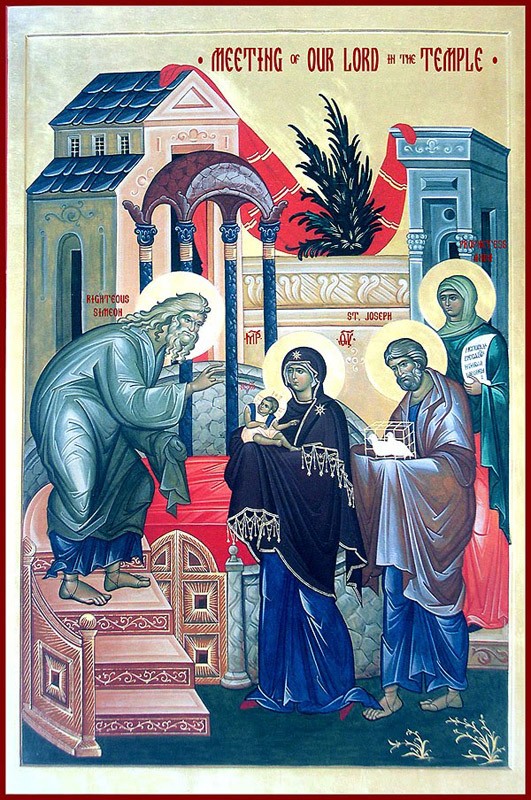The Meeting of the Lord in Icons and Frescoes
Photo gallery
The iconography for the Meeting of the Lord is based upon the Gospel passage of St. Luke (Lk. 2:22-39). On the icons, frescoes, and miniatures the key activity is the Theotokos giving the Child into the hands of Symeon; behind her is Joseph the Betrothed carrying doves either in his hands or in a cage, and behind Symeon is the prophetess Anna with a scroll in her hands.
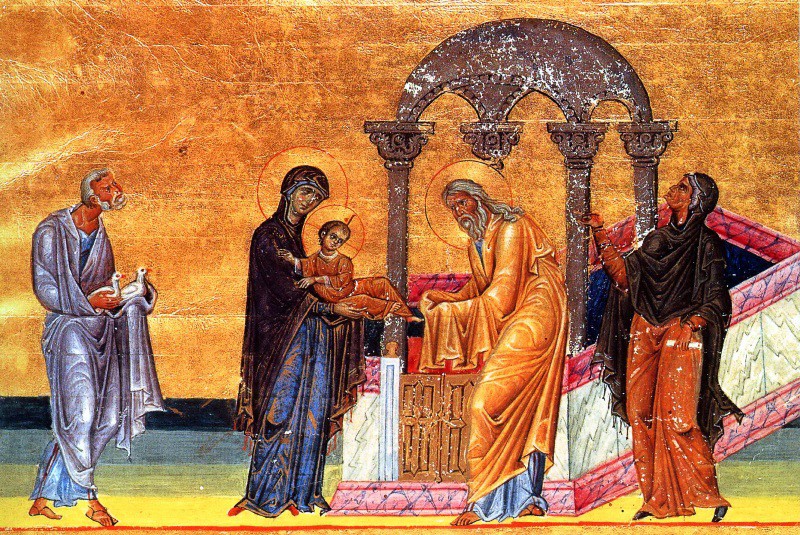
Miniature from the Menalogion of Basil II, first quarter of 11th c., Vatican Library (Vat. Gr. 1613)
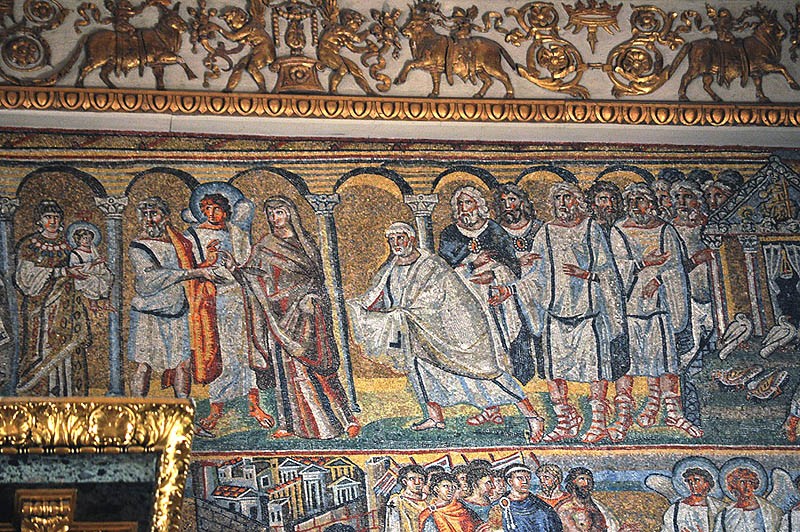
The Meeting of the Lord. Mosaic in the triumphal archway, Santa Maria Maggiore basilica, Rome. 432-440. Photo: Pavel Otdelnov

Meeting of the Lord. Enamel. Late 11th c.-early 13th c., Georgia. State Museum of Georgian Art, Tbilisi.
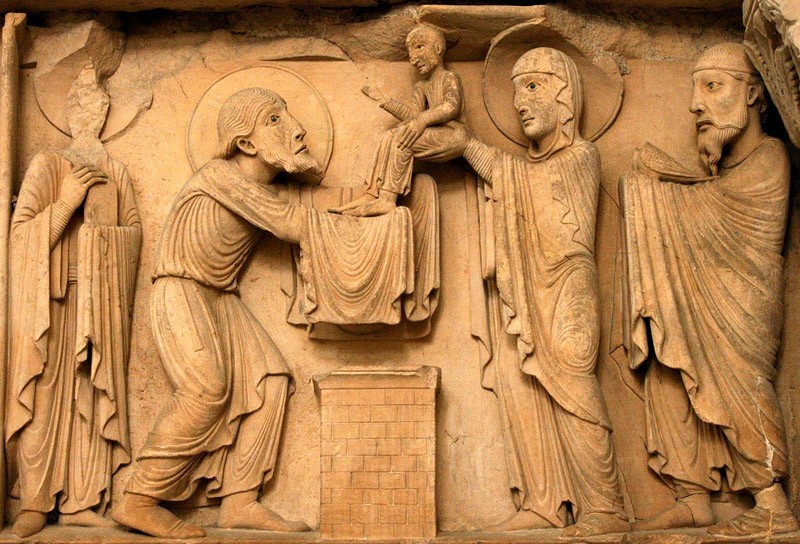
Meeting of the Lord, 7th c. Detail of the timpana of the Western façade, La Charité-sur-Loire, Burgundy, France
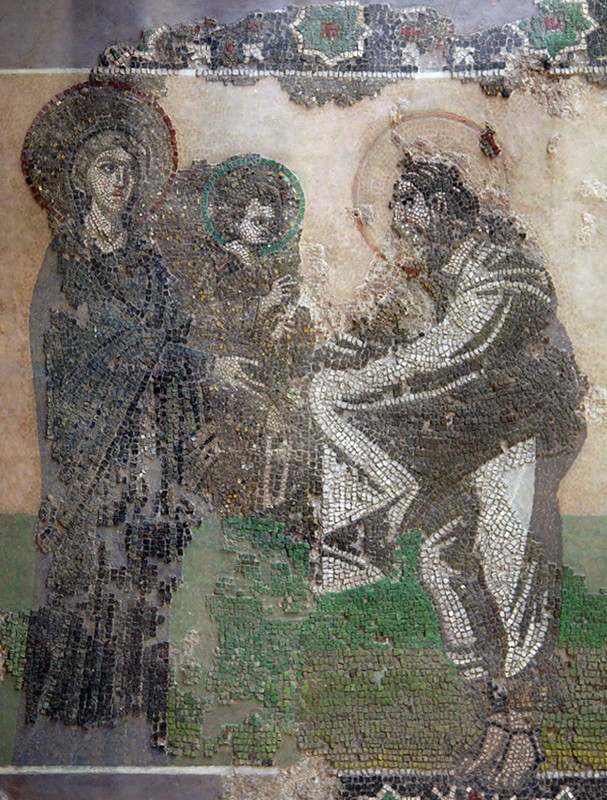
Mosaic, Church of the Mother of God Kyriotissa (Kalendarkhane Mosque), Istanbul. Archeological Museum, Istanbul.
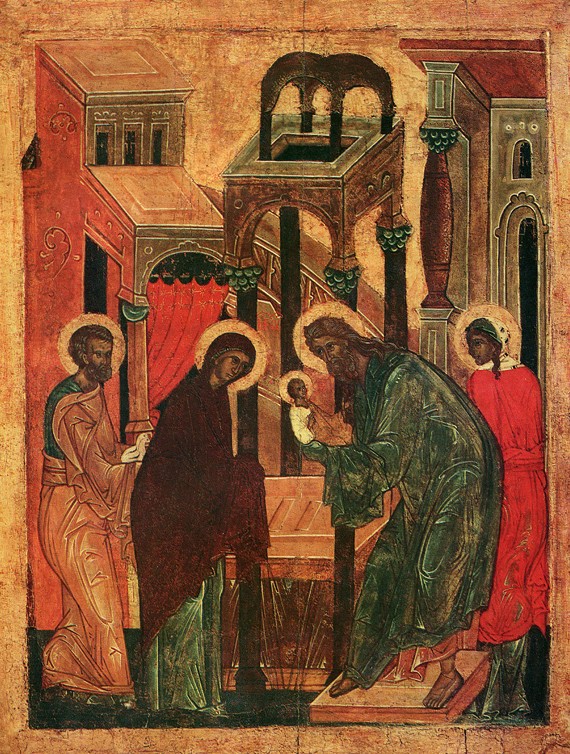
Icon, early 16th c., from the festal row in the Church of the Archangels in the old city, Pskov, Pskov museum-reserve.
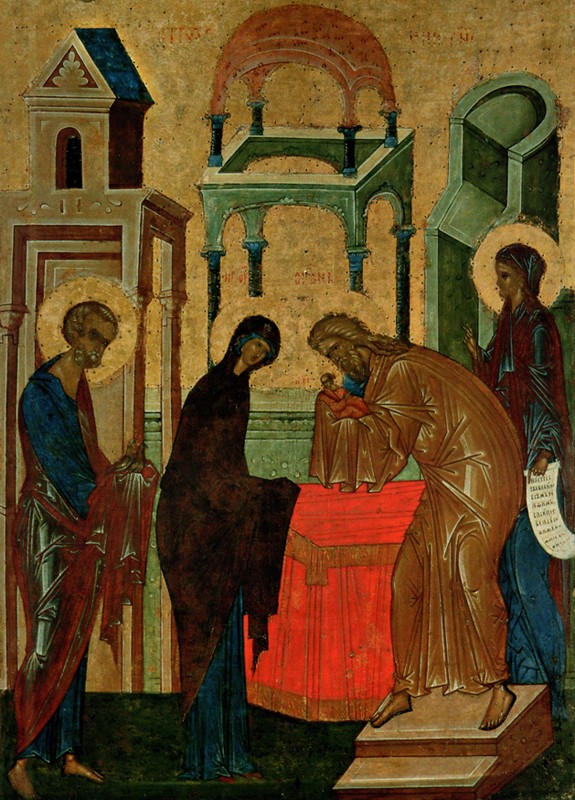
Cir. 1497, from the iconostasis of the Dormition Cathedral, St. Cyril of White Lake Monastery, Kirillo-Belozersk Museum-reserve.
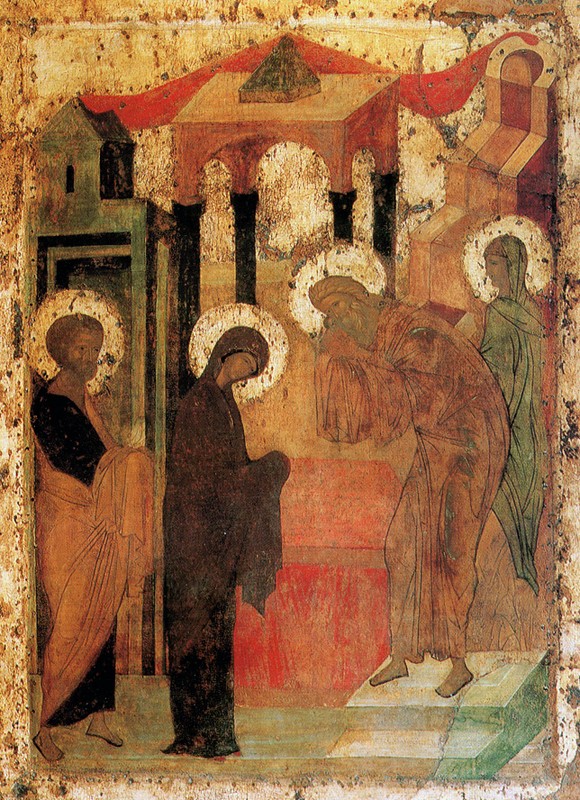
Icons from the iconostasis of the Trinity Cathedral, Holy Trinity-St. Sergius Lavra, cir. 1425. Ascribed to St. Andrei Rublev.
The most ancient image of the Meeting of the Lord preserved to the present day is depicted in one of the mosaics of the triumphal archway that frames the altar area of the Church of Santa Maria Maggiore in Rome (432-440). The scene with multiple figures of the Meeting of the Lord is interpreted here as the Mother of God’s walk with the Infant in her hands, accompanied by angels, to meet St. Symeon. The measured rhythm of this walk is set by the rhythm of the colonnades with arches, which is the background behind this action. Symeon, stooping with age, stands in the opening and stretches his arms to Christ, his hands draped with a mantle. Behind his back are men (possibly scribes and priests of the Jerusalem temple). On the frescoes in the church of Santa Maria in Castelserpio in Italy, painted by a Byzantine master (late 7th c.), Symeon is depicted with emphasis on his ancientness, with long hair—according to tradition, in anticipation for over 300 years of his meeting with the Lord as promised to him by the angel. Yet another ancient monument of iconography of the Meeting of the Lord, created before the era of iconoclasm, is the Constantinople mosaic in the Church of the Theotokos Kyriotissa (which during the Ottoman era was turned into the Kalendarkhane Mosque). Here the Infant Christ is also held in the arms of the Mother of God, while in monuments created after the iconoclastic period the Infant Christ is shown held by Symeon. The Mother of God is often depicted as sorrowful, feeling beforehand her Son’s suffering on the Cross according to the prophecy of Symeon: Yea, a sword shall pierce through thy own soul also (Lk. 2:35).
Alongside with the Annuciation, the Nativity, and the Baptism, the Meeting was one of the leading scenes in mosaic adornment of churches during the mid-Byzantine period—the churches of Agios Lukas in Phokida, Neo Moni on Chios, and of the Dormition in Daphne. In Rus’, the most ancient images of the Meeting of the Lord are the frescoes of the mid-11th century in the Pskov Mirozh Monastery cathedral, as well as 11th century frescoes in the St. Cyril Church (Kiev) and the Church of the Savior on the Nereditsa (Novgorod). On the fresco in the Church of the Dormition on Volotov Field (Novgorod, mid-14th c.), Symeon with the Infant in his arms is placed by the low, closed doors leading into the Holy of Holies. Many icons of the Meeting of the Lord preserved to our times are a part of the festal row of icons on church iconostases.
Comments

